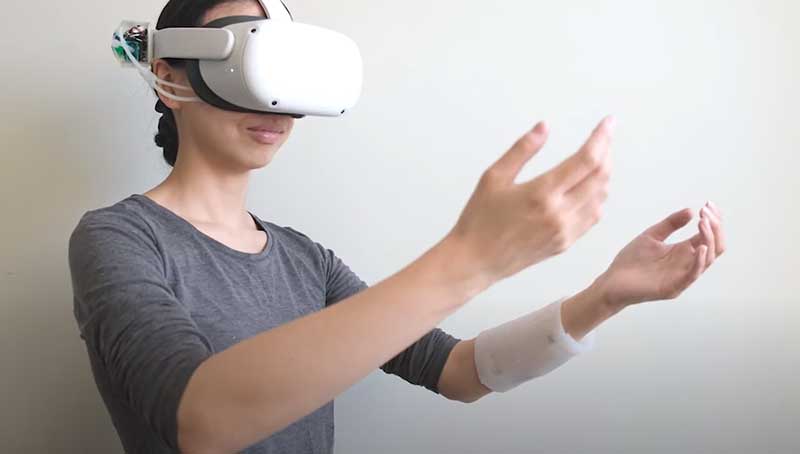Can you imagine being able to feel the cold of Siberia, or the heat of the desert in virtual reality? Well, it seems that soon it will be possible. The technology is already here, according to reports from TechSpot is likely to be one of the most immersive that we have known so far.
Created by researchers at the Human Computer Integration Lab at the University of Chicago, chemical haptics uses autonomous wearable devices to simulate sensations in virtual reality. Wearable devices combine silicone patches and micropumps to deliver five different chemicals to a person’s skin surface.
Related Thermal Display Glove Enable Users to Feel Virtual Temperatures in Real-Time
The chemicals can produce 5 different sensations: menthol creates a cooling effect, ideal for going out on a cold winter day in a virtual reality game; capsaicin, often present in spicy foods, reproduces the sensation of heat; sanshool can give a tingling sensation to an area; and lidocaine, a local anesthetic, can make your skin numb. A video shows how sanshool can simulate the shorting sensation of a futuristic surveillance device on the forearm.

While lidocaine sounds slightly concerning, it’s not quite as worrying as the last chemical: cinnamaldehyde. This will create a stinging sensation on the skin, possibly used as negative feedback when a player fails to achieve a task, or when they receive an in-game burn. It is worth remembering that all these chemicals are safe, apparently, so you’re unlikely to suffer injuries or have your skin melt off in some kind of Squid Game-like scenario. The devices certainly provide a wider range of simulations than current haptic feedback kits like the one below.
Related UK Virtual Reality Startup Moonhub Launches VR Dementia Training Suite
The chemical haptics device can be worn anywhere there is direct contact with the skin, such as on the cheeks for simulating hot/cold environments. You probably shouldn’t, however, stick them to your junk, but you can guarantee plenty of people will.













